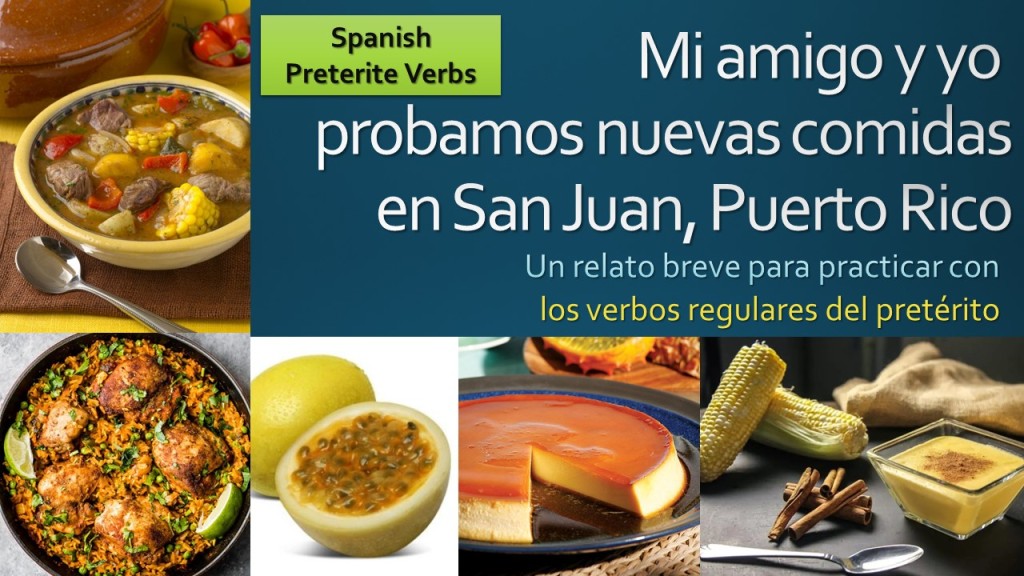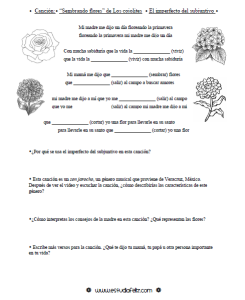This activity is designed for beginning learners to get introduced to regular preterite verb conjugations while practicing with vocabulary for food & drinks. It also invites students to learn more about Puerto Rican food.
The first half of the video introduces regular preterite verb conjugations for -ar & -er/ir verbs. It also explains “spelling change” verbs (-CAR, -GAR, -ZAR –> -QUÉ, GUÉ, CÉ) with the examples llegar – yo llegué and pagar – yo pagué.
Note: This activity does not include any irregular or stem-changing verbs.
The read-along story begins at minute 5:48 of the video. It is narrated by a Spanish-speaker from Zacatecas, México.
The free PDF activity sheet features prompts for pre- and post-viewing discussion, charts & brief questions about regular preterite conjugations based on the video, and a cloze activity with the story.
Any comments or suggestions are welcome!
If you use this with your students, I´d love to hear how it goes!
Video URL: https://youtu.be/EQvMuObI60k
Download Free PDF Activity Sheet:





 Main Street is closed for the whole city to enjoy 2 kilometers of cakes! Yes, this really happened! I came upon this scene January 7th of last year in Zacatecas, Mexico, and have been wanting to share this fun celebration the day after Día de Reyes with my students ever since. The result: this read-along video story (narrated by a native speaker from Zacatecas) and accompanying handout for story-based activities. I hope you will find it useful to incorporate into a unit on holidays, for targeted practice for preterite versus imperfect, and/or as a reading comprehension activity.
Main Street is closed for the whole city to enjoy 2 kilometers of cakes! Yes, this really happened! I came upon this scene January 7th of last year in Zacatecas, Mexico, and have been wanting to share this fun celebration the day after Día de Reyes with my students ever since. The result: this read-along video story (narrated by a native speaker from Zacatecas) and accompanying handout for story-based activities. I hope you will find it useful to incorporate into a unit on holidays, for targeted practice for preterite versus imperfect, and/or as a reading comprehension activity. In this activity, students practice using the imperfect subjunctive in indirect speech, including a writing prompt to add verses to the song.
In this activity, students practice using the imperfect subjunctive in indirect speech, including a writing prompt to add verses to the song.
 This song activity is great for a
This song activity is great for a
